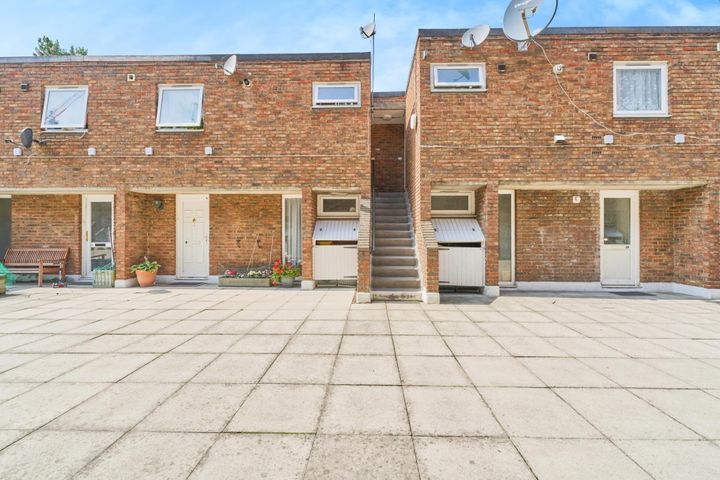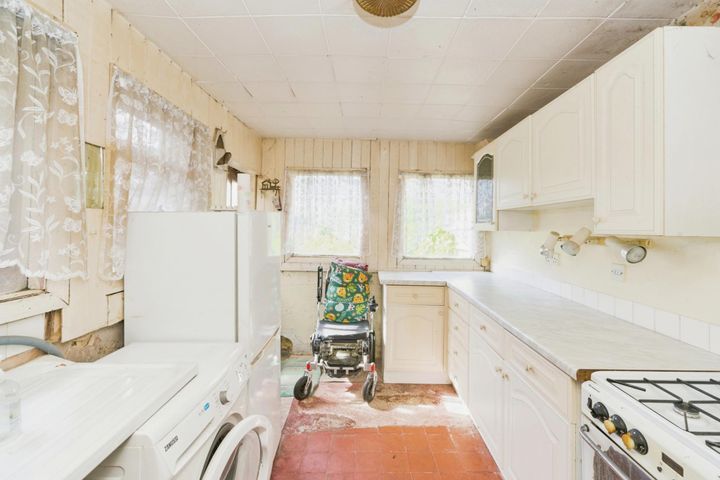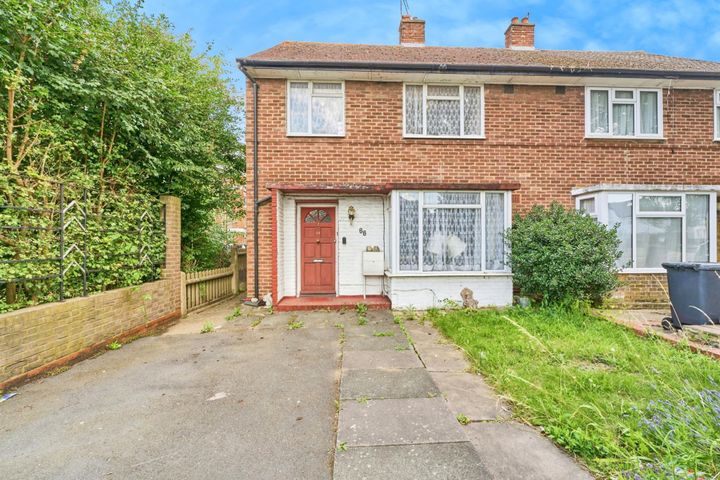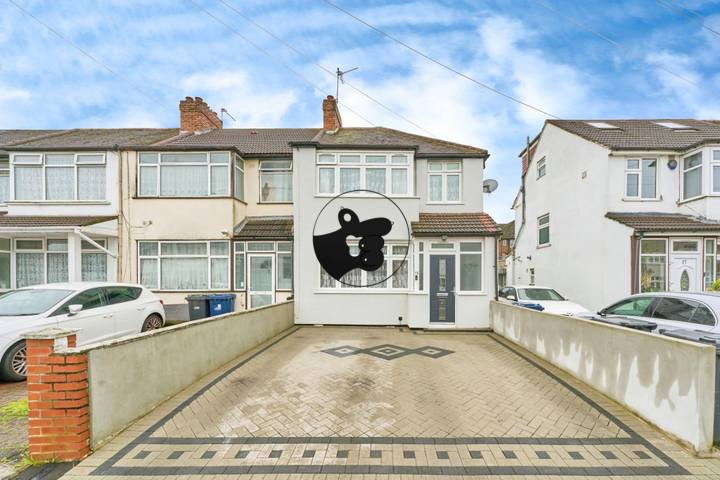Real estate prices in Ealing Borough have experienced notable fluctuations over the past few years. Data from property websites indicates that the average house price rose significantly from around £570,000 in early 2020 to approximately £720,000 by late 2023, reflecting a strong demand for housing in the area, partly spurred by its excellent transport links and green spaces. Areas like Acton and Northfields have seen rapid growth, with some properties fetching up to 15% more than their previous sale prices within just a couple of years. Additionally, the rental market has also tightened, with average rents climbing from £1,500 a month for a two-bedroom flat to over £1,800 in the same period, which highlights increasing demand among renters drawn to the area's amenities. Developers have been capitalizing on this trend, with several new residential projects underway, particularly around South Ealing and Ealing Broadway, attempting to meet the rising demand.
Ealing Borough
Location
Price Range
Any price
Price Range
Minimum
No min
Maximum
No max
Property type
Show all
Property type
Show all
House
Apartment
Building
Other
Bedrooms
Any beds
Bedrooms
Minimum
No min
Maximum
No max
Surface Range
Any surface
Surface Range
Minimum
No min
Maximum
No max
Sale type
For sale
Sale type
Show all
To rent
For sale
Location
Apartments and houses for sale in Ealing Borough
4 results
Recent
Ealing Borough insights
| Aspect | Summary |
|---|---|
| Population | Over 300,000 residents |
| Average Property Price | Approx. £500,000 |
| Rental Yield | 4.5% - 5.5% |
| Average Rent | Around £1,800 per month |
| Occupancy Rate | Typically 95% or higher |
| Capital Growth Rate | 4% - 6% annually |
| Property Tax | Council Tax bands A to H |
| Transaction Costs | Typically 3% - 5% of sale price |
| Expected ROI | 6% - 8% per year |
| Economic Growth Impact | Steady local economy with new developments |
Ealing Borough FAQ
How have real estate prices in Ealing Borough changed over the past few years?
What factors influence real estate prices in Ealing Borough?
Real estate prices in Ealing Borough are influenced by several key factors. Proximity to transportation links, particularly the Central and Piccadilly lines along with the Elizabeth Line, significantly impacts property values, as ease of commuting is a priority for many potential buyers. Areas like West Ealing, which have seen upgrades to transport infrastructure, have experienced noticeable appreciation in property prices. Additionally, the quality of local schools, such as the highly rated St. Benedict's and Ealing Fields High School, tends to attract families willing to pay a premium. The overall appeal of green spaces, including Walpole Park and the nearby Ealing Common, contributes to the desirability of the area, affecting housing demand and prices. Moreover, ongoing urban development and regeneration projects, like the Ealing Town Centre Plan, can reshape the local real estate landscape, driving up values as new amenities and residential options emerge. Lastly, broader economic factors, such as interest rates and housing supply in London, also play a crucial role in determining market trends in Ealing.
What is the average price of homes in Ealing Borough?
The average price of homes in Ealing Borough varies depending on the specific area and type of property. As of recent data, the average house price in Ealing is around £600,000, but this can fluctuate significantly. For instance, Victorian terraces in neighborhoods like Ealing Broadway can range from £800,000 to over £1 million, while more affordable options, such as flats or studios, may start around £300,000 in areas like Southall or Acton. New developments and modern apartments, particularly near transport links like the Elizabeth Line, also see higher price tags, often exceeding £500,000 for two-bedroom units. Overall, the housing market in Ealing reflects a mix of traditional and contemporary offerings, appealing to a diverse range of buyers.
Are there specific neighborhoods in Ealing Borough with higher property values?
In Ealing Borough, specific neighborhoods exhibit significantly higher property values, driven by various factors such as connectivity, amenities, and local schools. For instance, Ealing Broadway stands out with its impressive transport links, including the Central Line and the forthcoming Crossrail services, enhancing its appeal for commuters. Property prices in this area have surged, reflecting its status as a commercial hub with shopping centers and restaurants. Similarly, Bedford Park, known for its leafy streets and charming period homes, commands high prices due to its desirable aesthetic and proximity to excellent schools, contributing to a family-friendly environment. Areas like Northfields and Hanwell also show robust property values, supported by their community feel and access to parks, making them attractive for both families and young professionals. The distinct characteristics of these neighborhoods play a crucial role in shaping their real estate dynamics.
How does Ealing Borough compare to surrounding areas in terms of real estate prices?
Ealing Borough typically presents a more affordable real estate market compared to its neighboring areas such as Chiswick and Richmond, where property prices are notably higher due to their more affluent status and proximity to the Thames. For instance, as of late 2023, the average house price in Ealing hovers around £600,000, while in Chiswick, it can exceed £1 million for comparable properties. Similarly, properties in Richmond often command an average of about £1.2 million, illustrating a significant price differential. Ealing's diverse housing stock, ranging from Victorian terraces to modern apartments, offers a broader spectrum of pricing, appealing to families and first-time buyers. The borough also benefits from good transport links, which contribute to its relative desirability without reaching the price levels of nearby upscale locales. Overall, Ealing’s property market reflects a balance between accessibility and investment potential, set against the backdrop of its more expensive neighbors.
What types of properties tend to be more expensive in Ealing Borough?
In Ealing Borough, properties that tend to be more expensive are typically Victorian and Edwardian homes, which are highly sought after for their period features, spacious layouts, and larger gardens. Streets like Queen's Drive and The Groves showcase these attractive houses, often priced higher due to their architectural charm and desirable locations. Additionally, modern developments such as luxury flats in areas like Ealing Broadway and the regeneration projects around the Crossrail station have pushed up prices significantly. Properties in proximity to good schools, such as St. Benedict's School or Ealing Primary School, also command a premium, as families look to settle in areas with a strong educational reputation. Furthermore, homes with a unique appeal, such as those overlooking parks or green spaces like Walpole Park, tend to attract higher bids in the housing market.
How do local amenities affect real estate prices in Ealing Borough?
Local amenities play a significant role in determining real estate prices in Ealing Borough, as they directly impact the desirability of an area. Proximity to schools, such as the highly regarded Ealing Primary School and Drayton Manor High School, often inflates property values due to demand from families seeking quality education for their children. Furthermore, access to green spaces like Walpole Park and Gunnersbury Park enhances the appeal of nearby homes, attracting buyers willing to pay a premium for leisure and recreational options. Transportation links, including the Elizabeth Line and several Tube stations, also influence property prices; areas near stations like Ealing Broadway see higher real estate values as commuters favor locations with efficient access to central London. Retail and dining options, such as those found along Ealing High Street, contribute to the neighborhood's vibrancy, further boosting property appeal and prices. Overall, these amenities create a compelling case for higher real estate values as they enhance the quality of life for residents.





